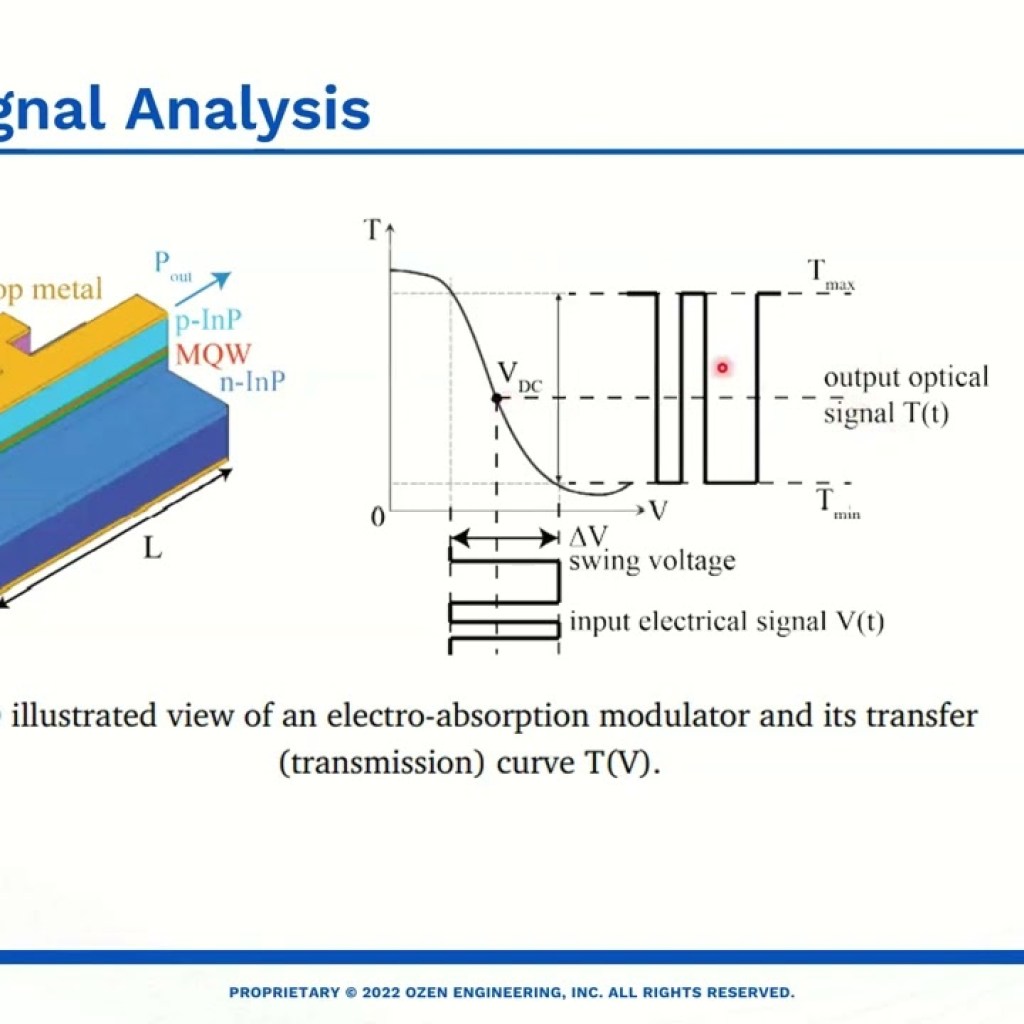Contents

Source: YouTube
Electroabsorption Modulators: A Brief Overview
Introduction
An electroabsorption modulator is a type of semiconductor-based optical modulator that allows for the control of laser beam intensity using an electric voltage. This modulator operates based on the Franz–Keldysh effect, which involves a change in the absorption spectrum due to an applied electric field.
Operation and Structure
Most electroabsorption modulators are designed in the form of a waveguide with electrodes to apply an electric field perpendicular to the modulated light beam. The quantum-confined Stark effect in a quantum well structure is utilized to achieve a high extinction ratio.
Advantages and Applications
Compared to electro-optic modulators, electroabsorption modulators can operate at much lower voltages, typically in the range of a few volts. They are capable of high-speed operation, with modulation bandwidths reaching tens of gigahertz, making them valuable for optical fiber communications. Additionally, these modulators can be integrated with distributed feedback laser diodes on a single chip, enhancing data transmission efficiency.
Future Developments
Researchers continue to explore advancements in electroabsorption modulators to improve their performance and integration capabilities. Emerging technologies aim to enhance modulation speeds, reduce power consumption, and enable broader applications in telecommunications and data transmission systems.
Source: Ansys Optics
Feel free to comment your thoughts.



